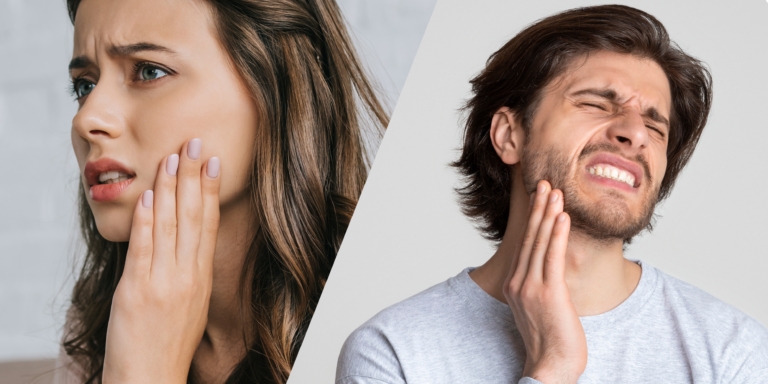
Can Physiotherapy Improve Your Immune System?
Can Physiotherapy Improve Your Immune System? Most people think of physiotherapy as treatment for injuries, pain, or movement limitations—but its benefits extend far beyond rehabilitation.

TMJ and chronic jaw pain can severely limit your daily life and your smile. Fortunately, osteopathy offers a safe, non-invasive solution. By focusing on muscle release, joint mobility, and nerve balance, osteopathic practitioners provide relief and long-term support. In this detailed guide, we’ll show you how osteopathy helps with TMJ and chronic jaw pain—using easy terms, proven techniques, and helpful tips you can trust right away.
Osteopathy targets not just the jaw joint but the entire musculoskeletal system. So, osteopathy helps with TMJ and chronic jaw pain by:
Restoring joint mobility through gentle manipulation
Releasing tight muscles in the jaw, neck, and face
Improving posture to reduce strain
Reducing inflammation via improved circulation
Rebalancing nerves to ease tension
TMJ (temporomandibular joint) disorders arise from misalignment, trauma, stress, or arthritis. Symptoms include:
Difficulty chewing or yawning
Pain when opening or closing your mouth
Clicking or popping in the jaw
Muscle tension in the jaw, neck, and shoulders also plays a big role—this is where osteopathy shines by treating the root cause, not just masking symptoms.
Osteopathic practitioners use tailored hands-on treatments such as:
Soft tissue release: Apply gentle pressure to relax tight muscles
Myofascial mobilization: Lengthen fascia around the jaw and neck
Joint manipulation: Improve movement and reduce misalignment
Cranial techniques: Gently rebalance cranial bones and fluid
Muscle energy techniques: Use patient effort to rebalance muscles
These methods increase blood flow, ease tension, and promote natural healing.
Poor posture—like forward head posture—adds extra strain to the TMJ. Osteopathy addresses spinal alignment issues by:
Realigning the cervical spine
Releasing tension in the neck
Strengthening upper back muscles
This helps take pressure off the jaw joint and supports long-lasting relief.
Fascia, the connective tissue surrounding muscles—especially the masseter, temporalis, and pterygoids—can tighten under stress or poor posture. Osteopathy gently loosens fascia to restore flexibility and reduce pain, often leading to prompt and noticeable relief.
Jaw muscles often overcompensate due to misalignment or spasms. Osteopathic therapy identifies and balances activity in these muscles so they coordinate properly, reducing strain and preventing flare-ups.
Improved blood and lymph flow from osteopathic techniques help clear inflammatory substances near the TMJ. Booster vascular health leads to faster recovery and less swelling or tenderness.
The trigeminal nerve and its branches relay pain from the TMJ. Osteopathic cranial techniques and gentle spinal adjustments can regulate the nervous system, calming hypersensitivity and reducing chronic pain signals.
Osteopaths often recommend simple at-home exercises that complement treatment, such as:
Gentle jaw stretches
Strengthening neck and upper back muscles
Posture correction drills
These exercises support treatment gains and reduce pain recurrence.
Osteopathy integrates well with dental care, physiotherapy, stress management, and counseling to address contributing factors holistically. A team approach ensures better outcomes.
Non-invasive and drug-free: Avoids medication side effects and surgery
Tailored care: Individual treatment plans address root cause
Holistic approach: Treats whole body, not just jaw
Evidence-based results: Many experience pain relief, better range, and fewer flare-ups after several sessions
Self-care integration: Patients learn exercises and lifestyle changes
Apply warm compresses or ice
Practice mindful relaxation and jaw awareness
Maintain good posture
Try jaw-friendly foods (soft diet during flare-ups)
Use gentle jaw exercises
These steps support ongoing recovery and joint well-being.
What is the typical duration of osteopathic treatment for TMJ and chronic jaw pain?
Most people see progress within 4–8 sessions over a month or two, though some may need more depending on severity.
Can osteopathy treat jaw locking or clicking?
Yes. By gently mobilizing the joint and addressing surrounding muscles, osteopathy significantly reduces locking and clicking.
Are there any side effects of osteopathic jaw therapy?
Side effects are minimal. Temporary soreness or mild headache may occur, but they usually resolve within a day.
How often should I do exercises at home?
Daily, but gently. Follow your osteopath’s plan and increase difficulty as recommended.
Will osteopathy help if I grind my teeth at night (bruxism)?
Yes. Osteopathy addresses jaw tension and posture, which often contribute to bruxism. Combined with dental devices, it can address both cause and symptom.
Is osteopathy safe for TMJ if I have had jaw surgery?
Generally safe when overseen by both your surgeon and osteopath. They will adjust techniques to ensure healing.
Osteopathy helps with TMJ and chronic jaw pain by treating the underlying causes through manual therapy, circulation enhancement, and nervous system balance. This natural, personalized, whole-body approach offers lasting relief, improved function, and support for long-term oral health. If jaw discomfort is affecting your life, consider seeing a registered osteopath.

Can Physiotherapy Improve Your Immune System? Most people think of physiotherapy as treatment for injuries, pain, or movement limitations—but its benefits extend far beyond rehabilitation.

Headaches and Tension? Try These Hands-On Osteopathic Solutions Headaches caused by tension can be draining, distracting, and downright frustrating. Whether they come from long hours

Isometric Exercises: Why We Recommend Them in Recovery When you’re healing from an injury, not all exercises are safe—some movements can even set you back.